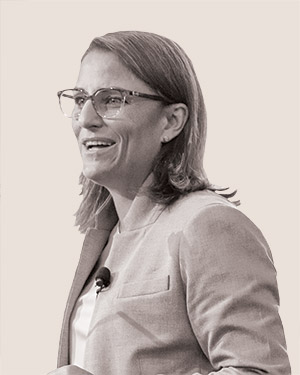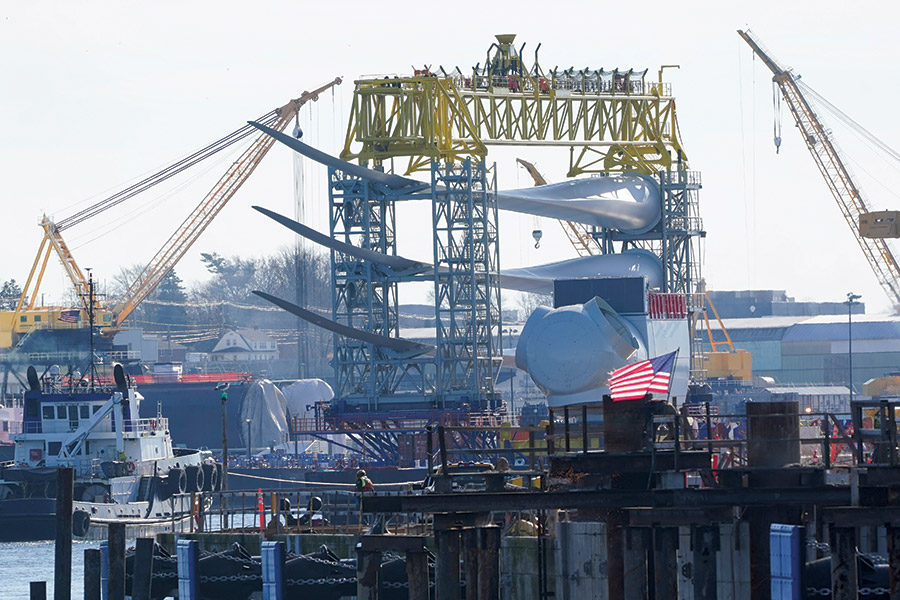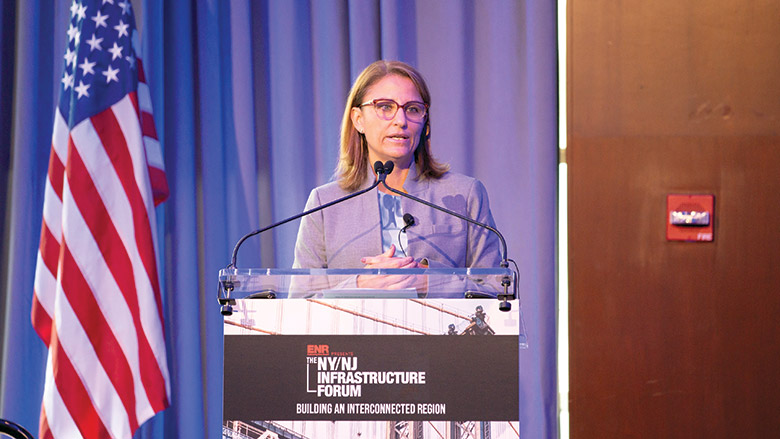
While leading New York State’s push to meet its nation-leading clean energy deployment goals that include 70 percent renewables by 2030, a 100 percent emissions-free power grid by 2040 and greenhouse gas emissions reduced by at least 85% from 1990 levels by 2050, Doreen M. Harris, President and CEO of the State Energy Research and Development Authority New York, acknowledges “big momentum” ahead amid new market realities.
Harris’ efforts had been ramping up as the degreed engineer and 14-year NYSERDA veteran took the helm in 2020 in an acting role and permanently the following year.
“My enthusiasm for engineering led me to NYSERDA and its large-scale renewables program,” he says. “With every challenge there’s an opportunity that leads to a solution, especially when we’re dealing with climate change, and that’s what’s most compelling to me.”
But the mission has coincided with upheavals in the nascent clean energy construction sector caused by both political and financial forces that have challenged the project’s development and are only now abating.
Despite the headwinds, the state has programs underway to develop billions of dollars of new clean energy infrastructure and expanded transmission to meet the mandates of its climate law, which took effect in 2020, as well as a growing demand for energy.
Last year, New York made it possible for the United States to finally join other nations in getting power generated for the first time from a utility-scale offshore wind installation.
This US clean energy milestone was reached in December when the 132 MW South Fork project, 135 miles east of Montauk, successfully sent its first power to the state grid. New York is targeting 9 GW of offshore wind power by 2035.

The 132 MW South Fork offshore wind project that was built off the coast of Long Island, New York, in December became the first utility-scale project in the United States to send power to the grid. Assembly of components is seen here at the State Pier in New London, Connecticut.
Photo: AP Photo/Seth Wenig
As of Jan. 18, project developer Orsted said half of its 12 turbines are deployed, with all set to operate this year. Project milestones also include the installation of a 1,500-ton offshore substation manufactured by Kiewit at its Texas yard, the first of its kind in the US, and a 68-m high-voltage AC export cable miles which is the first to be manufactured nationally.
The 806 MW Vineyard Wind offshore wind project in Massachusetts last month also just announced its first output and aims to complete installation of its 62 turbines this year.
Taking action
Still, supply chain issues remain in the industry with other projects delayed or canceled in New York and elsewhere in East Coast states as a result of early market contract pricing which cannot cover current construction costs.
Harris describes them as “significant and unforeseen for the industry”.
After New York regulators last year did not allow power price adjustments to guarantee capacity, he was instrumental in speeding up a new round of offshore wind procurement that would allow older projects to go back out to bid.
“Looking forward to 2024, NYSERDA will continue to urgently acquire and advance large-scale renewable energy projects in support of New York’s 10-Point Action Plan while building a [state-based] supply chain,” he says, adding that awards for Tier 1 offshore wind and renewable energy projects from accelerated applications are expected in February and April, respectively.
The expedited bidding process included industry and stakeholder feedback based on previous rounds of renewable energy procurement to incorporate inflation indexing, stakeholder participation requirements, disadvantaged community commitments and labor provisions, says Harris.
NYSERDA has also streamlined the process by “selectively eliminating certain bid requirements that historically required substantial effort to develop but provided face value in bid evaluations,” it adds. “Comments will further inform how to ensure bids consider and balance long-term project viability, allowing for timelines, market demand, development costs and risks, and opportunities that will best advance the supply chain of offshore wind while creating value for New York.”
The state is investing $700 million in offshore wind support infrastructure while working with other states and federal agencies “to collaborate and reduce costs through a shared vision for a US supply chain,” Harris says. It is also pushing the US government “for updated guidance on clean energy tax credits and a federal-state revenue-sharing program” to ease the project’s financial burdens, he adds.
“This reflects that we are not living in a world that is a very straight line,” Harris said. “It’s important that we all not be blindly optimistic about how we get from here to there.”
Billy Haugland, CEO of South Fork contractor Haugland Group, says “his bold leadership and vision will continue to produce innovative solutions.”

Doreen Harris, an engineer, has served as president and CEO of the New York State Energy Research and Development Authority since 2020.
Photo by Kristen Blush for ENR
The broader U.S. offshore wind sector is also catching on.
Under Harris, NYSERDA has been at the center of its supply chain and financial maelstrom, “taking decisive action to keep the industry on track,” says Liz Burdock, CEO of the offshore wind advocacy group in the United States Oceantic Network, and notes that its efforts “have sustained confidence” in the progress of the state and national sector.
Harris has also cited expanded transmission construction in New York as the “unsung hero” in reducing emissions, calling the state investment boosted “truly historic” as the largest in 50 years. Projects include the 340-mile Champlain Hudson Power Express to transport high-voltage hydroelectric power from Canada to New York City. Crews are now working at 15 locations on the privately funded project, which is estimated to cost more than $6 billion.
The head of NYSERDA also points to the 2 GW of community solar installed in New York, “reaffirming [the state] position itself as the leading community solar market” in the U.S., he says, noting “a record number of clean energy jobs in the state, now at 165,000 and growing.”
Looking to the future of the state’s ability to balance climate resilience and the cost of energy, he says, “We recognize that our goals become less achievable or sustainable if investors are cautious, developers can’t afford the luxury of undertaking projects and customers can’t pay their energy bills.”

